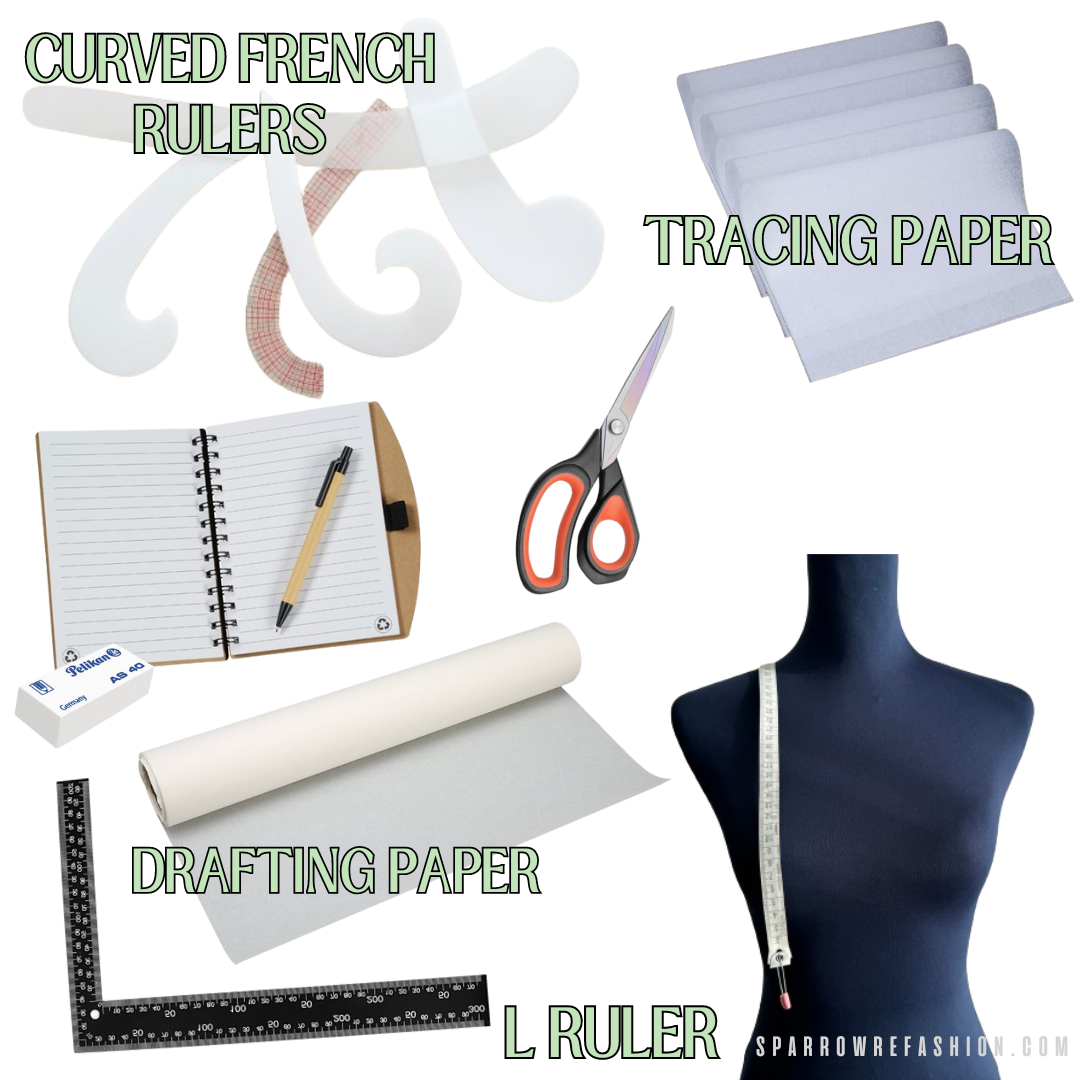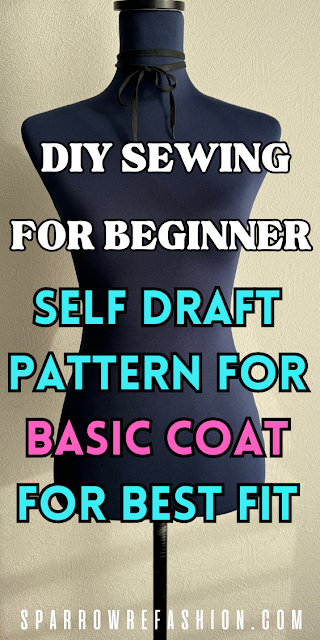.png)
2/23/2024
Enhance Your Sewing Patterns with Bust Darts: A Step-by-Step Guide
Are you looking to give your garments a custom-fit look? Bust darts are a fantastic way to add shape and structure, ensuring your clothes hug your figure just right. If you’ve ever felt baffled by bust darts, worry no more! I’ve created a detailed video tutorial that will guide you through the process, step by step.
Why Add Bust Darts?
Bust darts are essential for anyone wanting to tailor their clothing to their body. They help to eliminate bagginess and provide a smooth, fitted silhouette that enhances your natural shape. Whether you’re working on a dress, blouse, or any top, adding bust darts can make all the difference.
Materials & Tools Needed:

- A large piece of paper, such as tracing paper, to draw your pattern on.
- Drafting paper
- A pencil, preferably with a fine point and a good eraser, to sketch and adjust your pattern lines.
- Notebook
- L ruler
- A pair of scissors, to cut out ready darts. Check out my detailed post and learn what scissors are the best for your project.
The Video Tutorial:
To make learning as easy as possible, I’ve put together a video tutorial that covers everything you need to know about adding bust darts to your sewing patterns. From marking and measuring to the final stitches, I’ll walk you through each stage with clear, easy-to-follow instructions.
Watch Detailed Video Tutorial Here
How to Sew Bust Darts
Explore my detailed tutorial and step-by-step instructions for creating bust darts. This guide is carefully crafted to help newcomers navigate every step, filled with useful sewing tips to improve your sewing skills.
Step-by-Step Guide:
- Choosing the Right Pattern: Start with a pattern that fits well everywhere else. The bust area is where we’ll focus our adjustments.
- Marking the Dart Points: Learn how to locate the correct position for your darts based on your body measurements.
- Sewing the Darts: I’ll show you the technique for sewing smooth, even darts that lay flat against the body.
- Pressing for Perfection: Discover the secrets to pressing your darts without leaving marks
Ready Bust Darts !
Adding bust darts doesn’t have to be complicated. With my step-by-step video tutorial, you’ll master this technique in no time, and your sewing projects will look more professional than ever. So, head over to the video, give it a watch, and don’t forget to like and subscribe for more sewing tips and tricks!
This post has affiliate links * Affiliate Link. This means that if you click on the link and purchase an item, I will receive a small percentage of your purchase (at no extra cost to you).

.heic)
.png)
.png)
![How to Sew More Accurately [Sewing Tips and Tricks]](https://blogger.googleusercontent.com/img/b/R29vZ2xl/AVvXsEj8Bi_ZM_4AwDoYKKfmHVbtxDtYiFDmiU6mBlG2jXEDpzbdfsvZQmQ6kt4V0h9unT43oMbeCISz467295xESwanzyiNBk2Vxe8QegY1wjL4sLTMHV1QlI2sAGBupwKELH3vu5PWJI9XnO6ZZq4XQn6ujT6N3kjCmSDs68N1JtB54xuWPDRfNRqFOyLwW98/w640-h360/sewing-tips-and-tricks-how-to-sew-more-accurtely.png)
.png)
.png)
.jpeg)
.jpeg)



.JPG)

.jpg)
.png)

.jpg)
.jpg)
.png)
.png)
.png)










.png)
.png)
.png)
.jpg)

.jpg)

.png)
.png)












